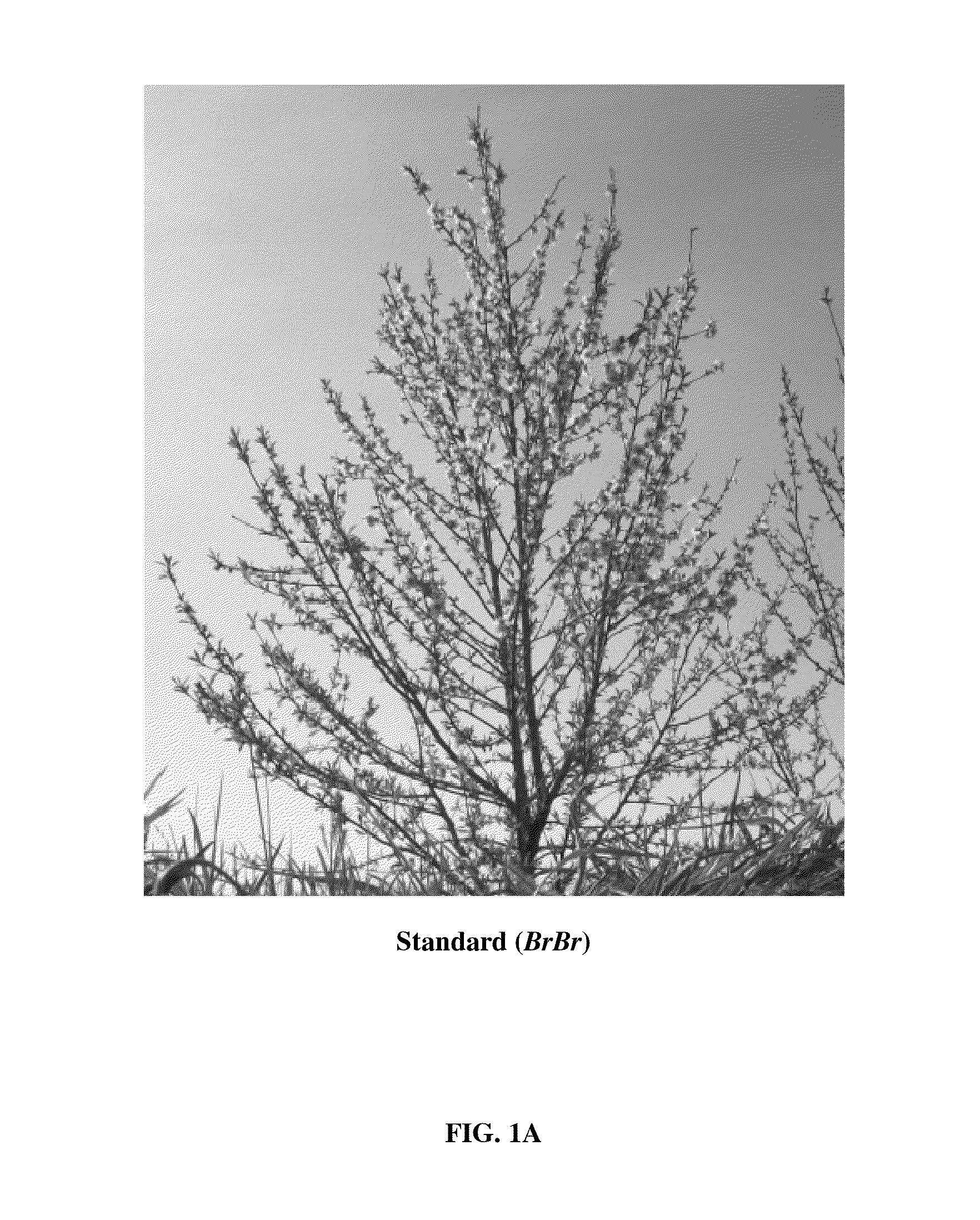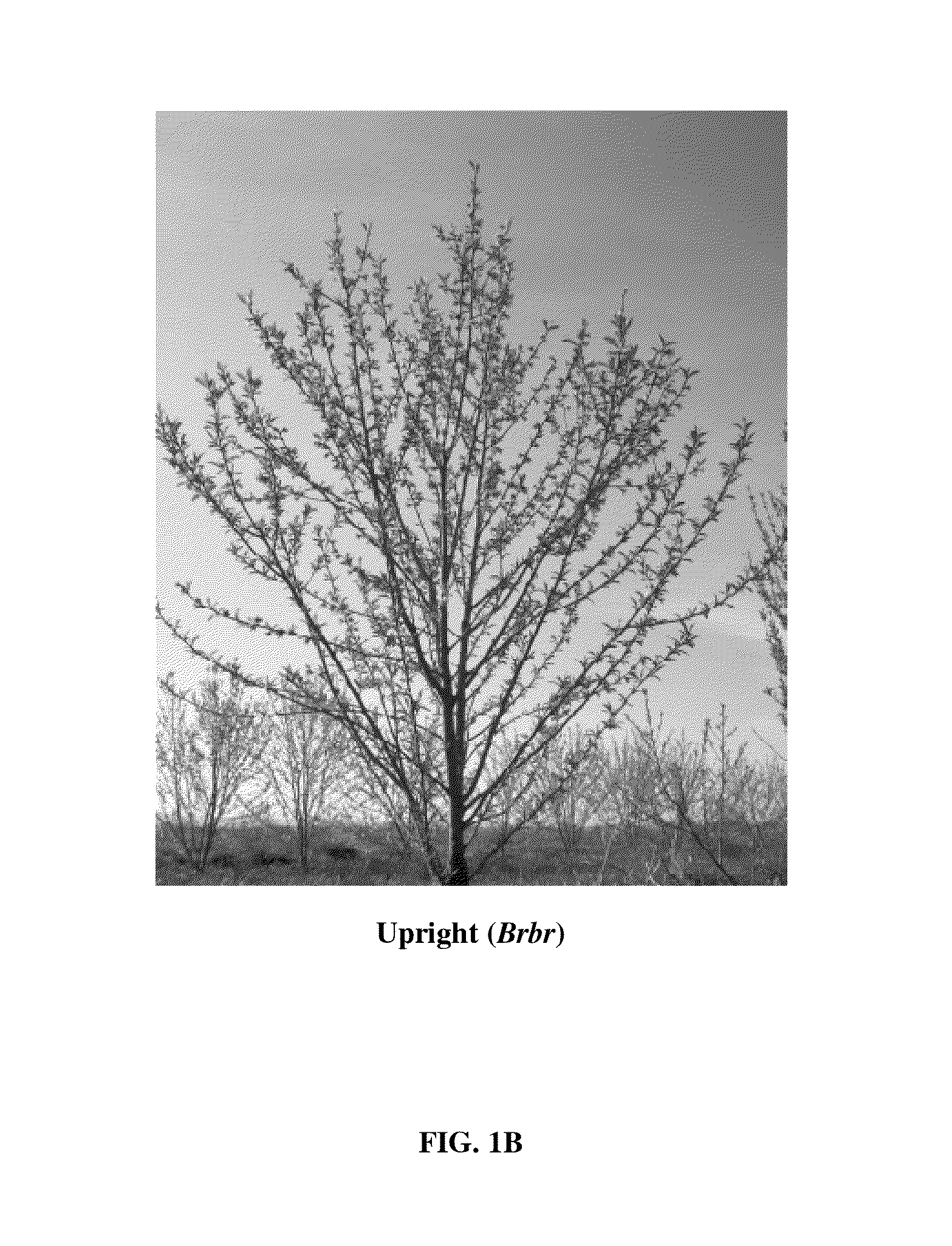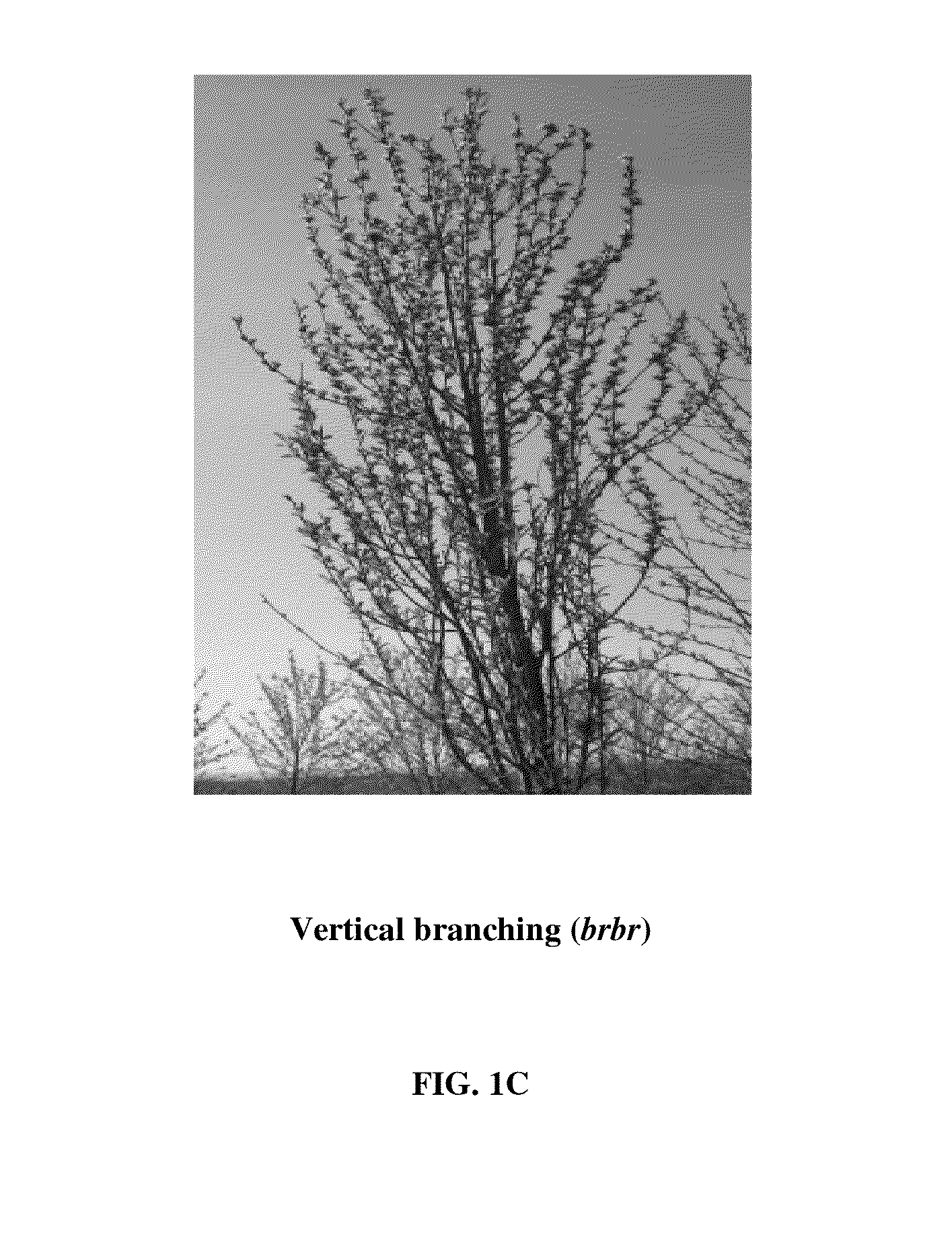Novel ppetac1 gene and method to manipulate tree architecture
- Summary
- Abstract
- Description
- Claims
- Application Information
AI Technical Summary
Benefits of technology
Problems solved by technology
Method used
Image
Examples
example 1
Sequence-Based Mapping of Br Using Pnomes
[0085]To identify the polymorphism responsible for the vertical trait from peach tree populations. A strategy for simultaneous genetic mapping and candidate gene identification using next-generation sequencing of pooled genomes, dubbed “pnomes” was utilized. The pnomes strategy is based on sequencing a population(s) of segregating individuals pooled by a specific trait(s). In theory, the linkage of individual polymorphisms to a trait of interest should be measurable by calculating the abundance of each polymorphism within a given pnome assembled against a reference genome. Tightly linked polymorphisms should occur at high frequency in the pnome containing the trait while those same polymorphisms should be rare or absent in the pnome lacking the trait, and vice versa. Consequently, when graphed by nucleotide position, the data should produce a bell-shaped curve delineating the location of the trait. A schematic describing the pnome strategy is...
example 2
PpeTAC1 Gene Expression
[0096]To determine the expression pattern of PpeTAC1, qPCR studies were performed using a set of tissue samples collected from both vegetative and reproductive tissues of the standard growth habit doubled haploid cultivar ‘True Gold’ at various stages of growth and development (FIGS. 4A-C).
[0097]RNA extraction and qPCR was performed as previously described by Dardick et al., 2010, BMC Biol. 9, 8-13 and incorporated herein by reference. Briefly, each reaction was run in triplicate using 50 ng of RNA in a 15 μl reaction volume using the Superscript III Platinum SYBR Green qRT-PCR Kit (Invitrogen, http: / / www.invitrogen.com). The reactions were performed on a 7900DNA Sequence detector (Applied Biosystems, www.appliedbiosystems.com). Quantification was performed using a relative curve derived from a standard RNA run in parallel. A primer set designed to amplify 26S ribosomal RNA was run on all samples and used to normalize the data. A dissociation curve was run to ...
example 3
Transformation of Plum Species
Silencing of PpeTAC1 in Plum.
[0103]PpeTAC1 specific primer sequences [5′-TGGGTTTGCTGGGAATGTGA-3′ (SEQ. ID. NO. 22)] and [Rev 5′-CAGCTGGTTTCTGAACAATGGC-3′ (SEQ. ID. NO. 23)] were used to PCR amplify a 300 base pair cDNA fragment from peach genomic DNA. The resulting fragment was cloned into the pENTR-D TOPO (Invitrogen) vector per manufacturer's specifications and sequenced for verification. An RNAi silencing vector was created using Gateway recombination technology (Invitrogen). PpeTAC1—300 pENTR-D TOPO was recombined with pHellsgate 8 (Commonwealth Scientific and Industrial Research Organisation (CSIRO), Australia) to create PpeTAC1-HG. This construct contains an inverted repeat of the 300 bp PpTAC1 fragment separated by an Arabidopsis thaliana pyruvate dehydrogenase kinase (PDK) intron. This arrangement is driven by a 35S promoter and is transcriptionally terminated by an octopine synthase (OCS) terminator. Expression of the resulting hairpin induces ...
PUM
| Property | Measurement | Unit |
|---|---|---|
| Fraction | aaaaa | aaaaa |
Abstract
Description
Claims
Application Information
 Login to View More
Login to View More - R&D
- Intellectual Property
- Life Sciences
- Materials
- Tech Scout
- Unparalleled Data Quality
- Higher Quality Content
- 60% Fewer Hallucinations
Browse by: Latest US Patents, China's latest patents, Technical Efficacy Thesaurus, Application Domain, Technology Topic, Popular Technical Reports.
© 2025 PatSnap. All rights reserved.Legal|Privacy policy|Modern Slavery Act Transparency Statement|Sitemap|About US| Contact US: help@patsnap.com



